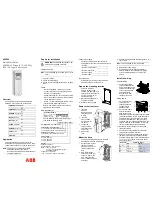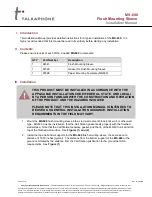
iSCSI-to-SATA II RAID Subsystem
User Manual
7
1.3 Terminology
The document uses the following terms:
RAID
RAID is the abbreviation of
“R
edundant
A
rray of
I
ndependent
D
isks
”
. There are different RAID levels with different degree of the
data protection, data availability, and performance to host
environment.
PD
The
P
hysical
D
isk belongs to the member disk of one specific RAID
group.
RG
R
aid
G
roup. A collection of removable media. One RG consists of a
set of VDs and owns one RAID level attribute.
VD
V
irtual
D
isk. Each RD could be divided into several VDs. The VDs
from one RG have the same RAID level, but may have different
volume capacity.
LUN
L
ogical
U
nit
N
umber. A logical unit number (LUN) is a unique
identifier which enables it to differentiate among separate devices
(each one is a logical unit).
GUI G
raphic
U
ser
I
nterface.
RAID
width,
RAID
copy,
RAID row
(RAID cell
in one row)
RAID width, copy and row are used to describe one RG.
E.g.:
1.
One 4-disk RAID 0 volume: RAID width= 4; RAID copy=1;
RAID row=1.
2.
One 3-way mirroring volume: RAID width=1; RAID
copy=3; RAID row=1.
3.
One RAID 10 volume over 3 4-disk RAID 1 volume: RAID
width=1; RAID copy=4; RAID row=3.
WT
W
rite-
T
hrough cache-write policy. A caching technique in which the
completion of a write request is not signaled until data is safely
stored in non-volatile media. Each data is synchronized in both data
cache and accessed physical disks.
WB
W
rite-
B
ack cache-write policy. A caching technique in which the
completion of a write request is signaled as soon as the data is in
cache and actual writing to non-volatile media occurs at a later time.
It speeds up system write performance but needs to bear the risk
where data may be inconsistent between data cache and the
physical disks in one short time interval.
RO
Set the volume to be
R
ead-
O
nly.
DS
D
edicated
S
pare disks. The spare disks are only used by one specific
RG. Others could not use these dedicated spare disks for any
rebuilding purpose.








































